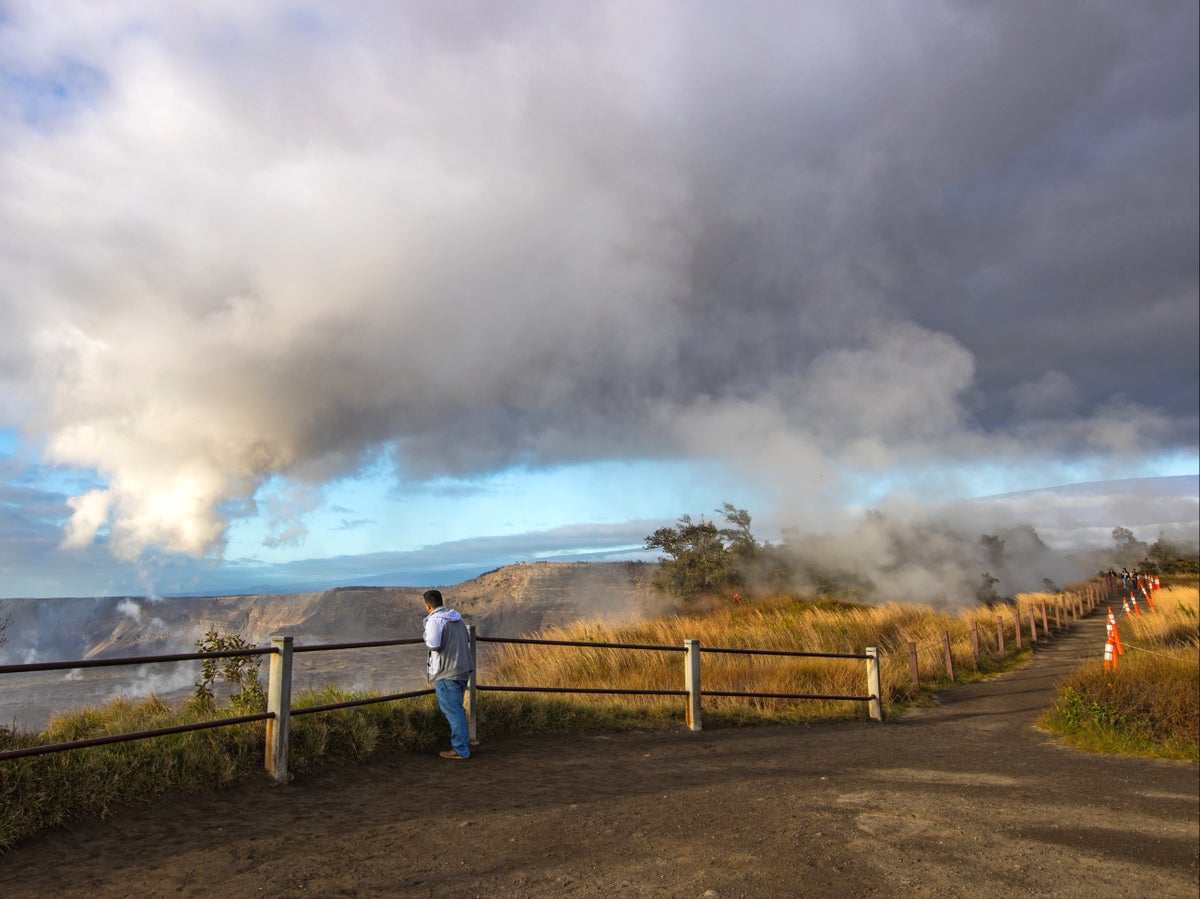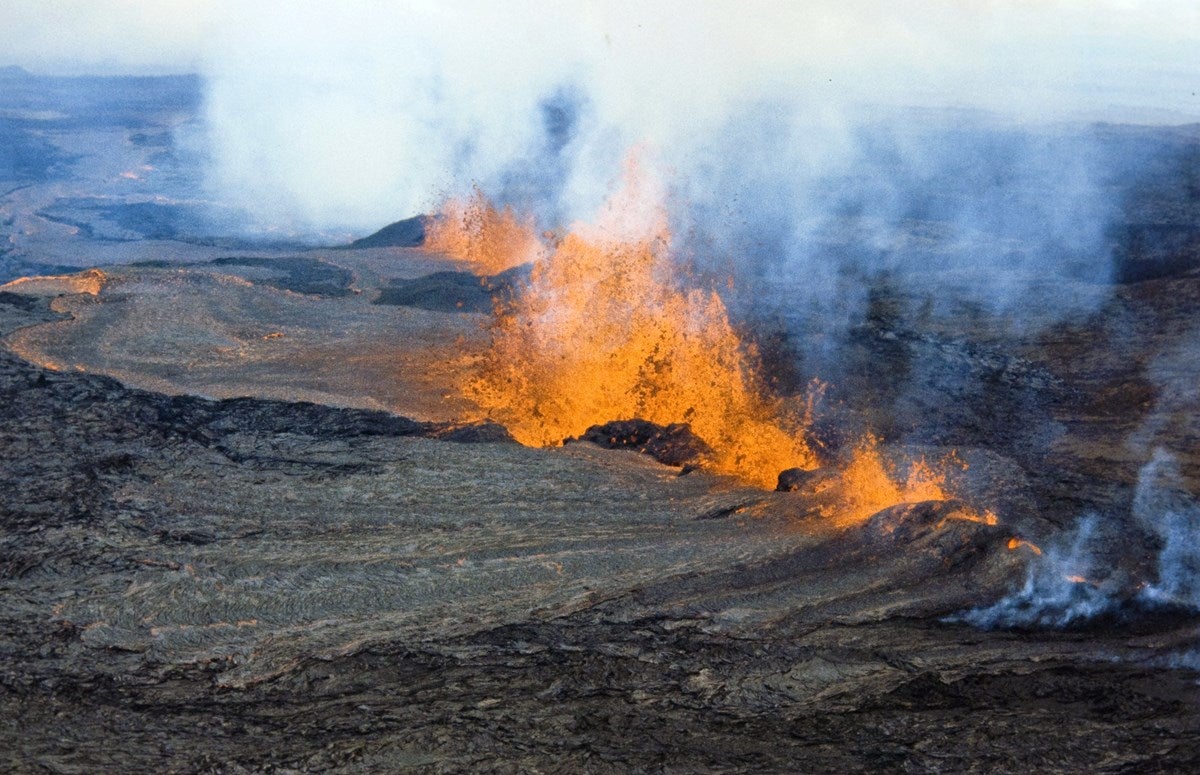
A series of earthquakes continue to rattle beneath Hawaii’s Mauna Loa, the world’s largest active volcano, leaving geologists to continue to warn that it’s in a “state of heightened unrest”.
A magnitude 5.0 earthquake was the strongest ripple to tear across the underbelly of the formation, which is situated on the centre of the state’s big island of Hawaiʻi.
News of the increased seismic activity in October prompted the National Park Service to close access to the summit to climbers and tourists, a move that the agency said was “a precautionary measure”.
On Thursday (27 October), the Hawaiʻi Emergency Management Agency issued its first news release on the Mauna Loa unrest, noting that while the seismic activity is concerning for residents there are currently “no signs an eruption is imminent”.
“We’re reminding people to take this opportunity to register for county emergency alert messages and prepare or review their plans to be ready for any disaster,” said Talmadge Magno, Hawai‘i County civil defense administrator.
The civil defense agency has also been holding meetings across the island in an effort to educate residents about how to be prepared for a possible emergency in recent weeks, which includes recommendations like equipping their homes with a “go bag” with food.
“Not to panic everybody, but they have to be aware of that you live on the slopes of Mauna Loa. There’s a potential for some kind of lava disaster,” added Magno, who noted that the volcano makes up 51 per cent of the island’s landmass.
Though the volcano hasn’t erupted since 1984, the past few weeks of increased underground quakes has given rise to local concerns that the Mauna Loa might be due for a spill over.
Here, we breakdown everything we know about the possibility of such an outcome and why Mauna Loa is on scientists and geologists’ radar in recent weeks.
What is Mauna Loa?
In addition to Mauna Loa, Hawaii’s big island is made up of four major volcanoes: Kilauea, Mauna Kea, Hualalai and Kohala. Mauna Loa is by far the largest of the group and also holds the record among active volcanoes on the planet for being the biggest.
Mauna Loa – aptly named “Long Mountain” – stretches 13,679 feet into the air above the sea level where it covers half of the island’s length at 60 miles long and 30 miles wide. The summit caldera, called Mokuaweoweo, is itself three miles long.
When did Mauna Loa last erupt?
The sky-scraping formation has been relatively quiet over the past few decades, as scientists celebrated the 30th anniversary of its last eruption on 25 March 2014.
Though the last one occurred in 1984, eruptions at Mauna Loa have been occurring for generations.
Since 1832, there’s been 39 eruptions documented while the USGS estimates that – on average – one has occured every six years over the past 3,000 years.

When did new activity begin?
Warnings began to be issued part way through September when geologists began to record an uptick in the number of earthquakes trembling below its surface. For a typical day in mid-September, the site was experiencing approximately 20 quakes a day, but that number shifted up to 40 by the beginning of October.
In response to this shift in seismic activity, the US Geological Survey Hawaiian Volcano Observatory updated its advisory level from green to yellow out of precaution for the volcano’s “heightened unrest”.
In this four-tier advisory system, green is the lowest and equates to normal activity; yellow intimates that the “volcano is exhibiting signs of elevated unrest above known background activity”; orange is watch and means that there is “escalating unrest with increased potential of eruption”; and red means an eruption is “imminent, underway, or suspected”.
In October, the summit of Mauna Loa was closed to tourists in light of the heightened activity out of what the NPS called “a precautionary measure”.
Is it erupting now – or will it erupt soon?
Scientists and geologists who are closely monitoring activity at Mauna Loa note that it isn’t erupting and add that, currently, there are no signs of an imminent eruption.
“However, Mauna Loa continues to be in a state of heightened unrest as indicated by increased earthquake activity and inflation of the summit,” the USGS Hawaiian Volcano Observatory wrote in their daily update on 27 October.
Scientists note that the rate of earthquakes that are occurring at Mauna Loa are not enough to merit raising the alarm bells higher than the current volcanic alert level advisory of yellow.
By comparison, ahead of the 1975 eruption at the site, earthquakes topped out at more than 1,000 per day, while during the last eruption in 1984, there scientists were recording hundreds per day in the weeks leading up to its final blow.
(The USGS last issued a yellow alert for Mauna Loa in 2019.)

What’s causing the increase in seismic activity?
Geologists from the USGS Hawaiian Volcano Observatory explained in an update provided on 16 October that the cause behind the increased activity is stemming from “renewed input of magma” into the volcano’s reservoir system, which is described by the USGS as the region beneath the vent of a volcano where molten rock (magma) is stored prior to eruption. Also known as a magma storage zone or magma reservoir.
“As the reservoir expands it is triggering small earthquakes directly beneath Mokuaweoweo caldera and in a region just to the northwest of the caldera,” the agency said in the Sunday update.
“The current locations of earthquakes and deformation do not necessarily mean that the next eruption will occur there. Mauna Loa remains at an elevated alert level of ADVISORY/YELLOW,” the statement added, emphasising that the current activity “does not suggest that a progression to an eruption is certain, and there are no indications that an eruption is imminent.”
Some of the signals that experts rely on to provide them with these estimations are the earthquakes themselves, in addition to satellite imagery, temperature data and visual observation.
For instance, one such device that measures important visual elements are tiltmeters, which are installed to measure the tilt on the ground surface of a volcano.
Does it pose a risk to residents in Hawaii?
Mauna Loa is a very active volcano and because of that it has remained top priority for the USGS to monitor its activity closely.
Since 1868, it has produced large amounts of basalt – which is the very fluid, dark lava – that have reached the shores of the ocean eight times.
When it erupted it last in 1984, its molten flow came within 7.2 km of Hilo, the largest urban centre on the island with approximately 44,000 residents.
Geologists and scientists are, however, monitoring the situation closely and in their most recent update have indicated that, at present, “Mauna Loa is not erupting and there are no signs of an imminent eruption at this time.”







